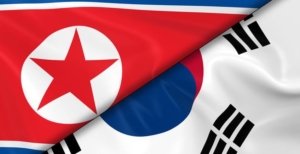By Tara Copp, Military Times–
Defense Secretary Jim Mattis confirmed Monday that the U.S. and South Korea have discussed employing tactical nuclear weapons as an option to defend against North Korea’s nuclear weapons program.
The acknowledgment from Mattis comes as the U.S. and international community grapple with increasingly aggressive nuclear weapons testing by North Korea.
In the last few weeks, North Korea has tested an intercontinental ballistic missile capable of reaching the U.S. mainland and tested a hydrogen bomb, according to U.S. Strategic Command’s assessment of the program.
Last Thursday, as Mattis was at STRATCOM assessing the U.S. nuclear posture, North Korea fired another intermediate range missile over Japan, sending millions of Japanese citizens into shelters.
On Monday, Mattis said there are military options to use against North Korea that would not result in mass casualties for Seoul, but he would not go into specifics.
South Korean Defense Minister Song Young-moo told his parliament he had requested the U.S. consider the return of tactical nuclear weapons to the Korean Peninsula during a U.S. visit with Mattis earlier this month.
On Monday, Mattis confirmed the exchange, but did not provide further details.
“We discussed the option,” Mattis told reporters at the Pentagon.
“We have open dialogue with our allies on any issue they want to bring up.”
However, the risk of reintroducing the weapon to the peninsula could be grave, said Air Force Gen. John Hyten, STRATCOM commander, who met with reporters during Mattis’ visit.
“I think it is actually a very dangerous term to use, because I think every nuclear weapon that is employed is strategic,”
The U.S. has around 500 B-61 low-yield, or “tactical” nuclear gravity bombs ― some with yields as small as 0.3 kilotons in their arsenal, said James McKeon, a nuclear weapons analyst for the Center for Arms Control and Non-Proliferation.
However, it’s not the size that determines their tactical or strategic status, McKeon said. The bombs are tactical ― and not governed by the 2010 new Strategic Arms Reduction Treaty, or START treaty ― if they are delivered on a tactical aircraft, such as an F-16 or F-15 fighter jet, McKeon said.
The weapons become strategic if delivered via on of the nation’s strategic assets, such as the B-2 or B-52 nuclear-capable bombers.
Tactical nuclear weapons were removed from the South Korean Peninsula in 1991 in a previous attempt to get North Korea to abandon its nuclear weapons program.
To Hyten, the weapons are the same regardless of delivery or yield, because of the risk that North Korea would also choose to employ a low-yield device and bring both nations into an escalated, nuclear conflict.
“To call it a tactical weapon brings into the possibility that there could be a nuclear weapon employed on a battlefield for a tactical effect,” Hyten said. “It’s not a tactical effect. If somebody deploys what is a non-strategic nuclear weapon or a tactical nuclear weapon, the United States will respond strategically, not tactically because they have now crossed a line ― a line that hasn’t been crossed since 1945.”


Leave A Comment
You must be logged in to post a comment.